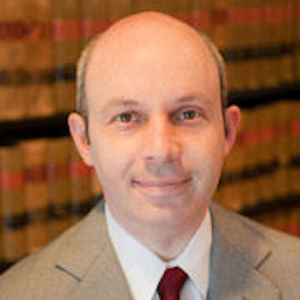
Thomas Goldstein
is an appellate advocate, best known as one of the nation’s most experienced Supreme Court practitioners having argued 38 cases. He has been counsel on more successful petitions for certiorari over the past decade than any other lawyer in private practice. Tom is also the co-founder and publisher of SCOTUSblog. Tom’s recognitions include being named by the National Law Journal as one of the nation’s 40 most influential lawyers of the decade and (in both 2006 and 2013) one of the nation’s 100 most influential attorneys. Tom is also the co-founder and publisher of SCOTUSblog – a web-site devoted to comprehensive coverage of the Court – which is the only weblog ever to receive the Peabody Award.

Recent Articles by Thomas Goldstein
I represent MCM Portfolio LLC, which is seeking Supreme Court review of a recent decision of the United States Court of Appeals for the Federal Circuit upholding the constitutionality of the inter partes review (IPR) procedures created by the America Invents Act (AIA). The petition is available here. Amicus briefs in support of the petition are being filed May 31. We argue that IPR violates Article III of the Constitution, which vests the judicial power in the federal courts, and also the Seventh Amendment, which guarantees a right to a jury in civil litigation.
We along with several other attorneys represent ParkerVision, the plaintiff, which secured a $173 million infringement verdict that the courts subsequently threw out based on their own assessment of the evidence. In this case, the roles of courts and juries are front and center. The Federal Circuit has been dismissive of jury findings. As Judge Newman has observed, the Federal Circuit frequently “reweigh[s] the evidence to reach [the court’s] preferred result, rather than considering whether substantial evidence as presented at the trial supports the verdict that was reached by the jury.” Other judges and scholars have concurred in this view.

![[IPWatchdog Logo]](https://ipwatchdog.com/wp-content/themes/IPWatchdog%20-%202023/assets/images/temp/logo-small@2x.png)